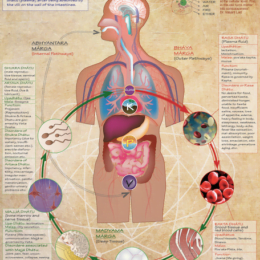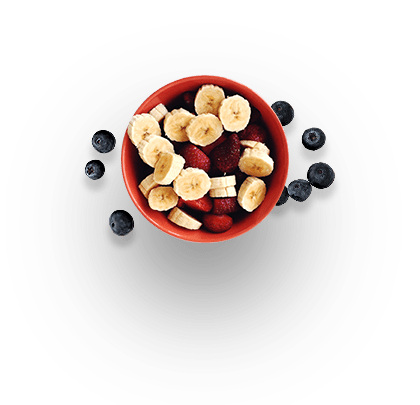
Grains are naturally high in the earth element and sweet in taste, becoming sweeter when well-cooked and chewed. Most whole grains are neutral in energy, meaning they are not overly heating or cooling. In addition, whole grains tend to be moistening, build tissues, provide stamina, satisfy hunger and taste, and are generally sattvic—calming and grounding in nature. The fibrous inner husk of whole grains also removes excess bile and acidity, cleanses the gut, and gives bulk to stool.
Fairly gentle in their qualities and actions, whole grains balance all constitutions. Brown rice is good for everybody. Wheat is particularly sweet, moist and heavy, and good for Pitta and Vata types (so long as they can digest it). Oats are mild and grounding, and benefit these types too. Barley is sweet, but lighter and drying, so a good choice for Kapha. The slight bitterness and astringency of corn, rye, buckwheat and millet also help to balance moist, heavy Kapha. As does a light dry-roasting before cooking, which renders grains more light and warming.
Whole grains combine well with each other, and with vegetables, and most other foods. Well-stored grains hold their potency, and can be enjoyed in all climates by all constitutions.
Preparation
How different properties of Grains affects the Doshas.
Best: Steamed whole grains are balanced and easiest to digest. Grains with pointed ends are also best.
Breads: Hard to digest, yeasts are gas-producing: V↑; toasted is easier to digest and makes them better for V and K.
Pastries: More difficult to digest than bread, especially if made with refined sugar and flour.
Unleavened Breads: Chapatis, tortillas, matzo, etc. are better than yeast bread.
Pastas/Noodles: Good (especially whole wheat).
Cut/Ground: Good, but lose their properties quicker.
Oil Fried: Harder to digest, PK↑ Ᾱma↑.
Dried: Granola, etc. V↑K↓, corn chips (fried in oil) PK↑ and dryness V↑, crackers are better all around.
Antidotes: Some spices may be helpful, but as necessary.
Combinations
It is better not to combine certain foods.
Grains are neutral and combine well with many different foods: vegetables, fruits, nuts, dairy, animal products.
Make sure the other foods are combinable (i.e. grains and vegetables are ok, grains and fruits are ok, but fruits and vegetables do not combine well.)
Timing
Times either during the day or the season
Season: Good during any season due to holding their potency within the seed. Winter is especially a good time.
The Grain List
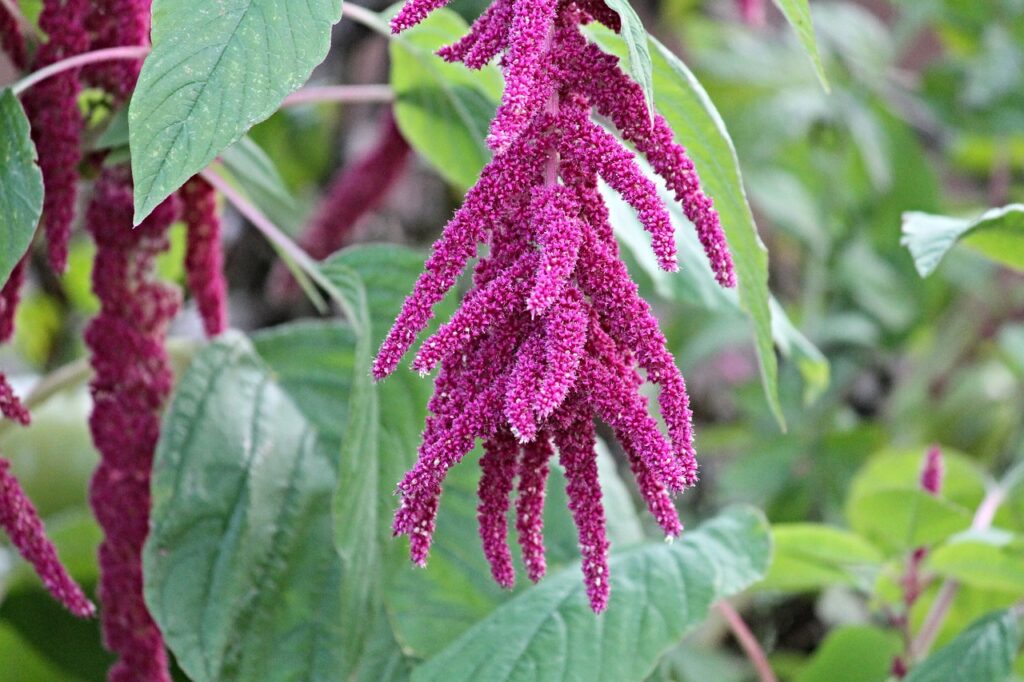
Amaranth (Ramdana)
Energetics: P↓VK↑
Taste/Rasa: Sweet
Potency/Virya: Cold
Vipaka: Pungent
Actions: Diuretic, demulcent, anti-rheumatic.
Indications: –
Description: Amaranth, known as ‘ramdana’ in India, is among the oldest cultivated foods in the world. It’s super easy to cook, and is one of the best breakfast options for those with Kapha dosha. These tiny seeds pack a mighty punch – they’re loaded with nutrients like vitamin A, C, B and K, calcium, potassium, iron, and phosphorous. On the other hand, amaranth is completely gluten free. So it’s no surprise there’s a whole bunch of amaranth benefits you can reap.
Amaranth is one of the most protein-rich plant-based foods out there. It offers a wonderful nutty, earthy flavor and pairs well with both sweet and savory spices—which, when added, enhance the digestibility of this tiny, nutrient-dense grain.
Although it is often categorized as a grain, amaranth is technically a seed and often looks like a smaller version of quinoa. For these reasons, you may also hear amaranth referred to as a pseudo grain.

Barley (Yava)
Energetics: PK↓V↑ (in excess)
Taste/Rasa: Sweet, astringent
Potency/Virya: Cold
Vipaka: Sweet
Actions: Diuretic, demulcent, anti-rheumatic.
Indications: Aids with lung disease, cough, fevers, arthritis, edema, water retention, kidneys, diarrhea, cleanses the urinary tract, increases and bulks stool, reduces body fat and mucus, helps difficult breathing, stiff thighs, throat, and skin disorders. It is strengthening, stabilizing, heals infections and removes toxins, prevents cholesterol absorption.
Description: –
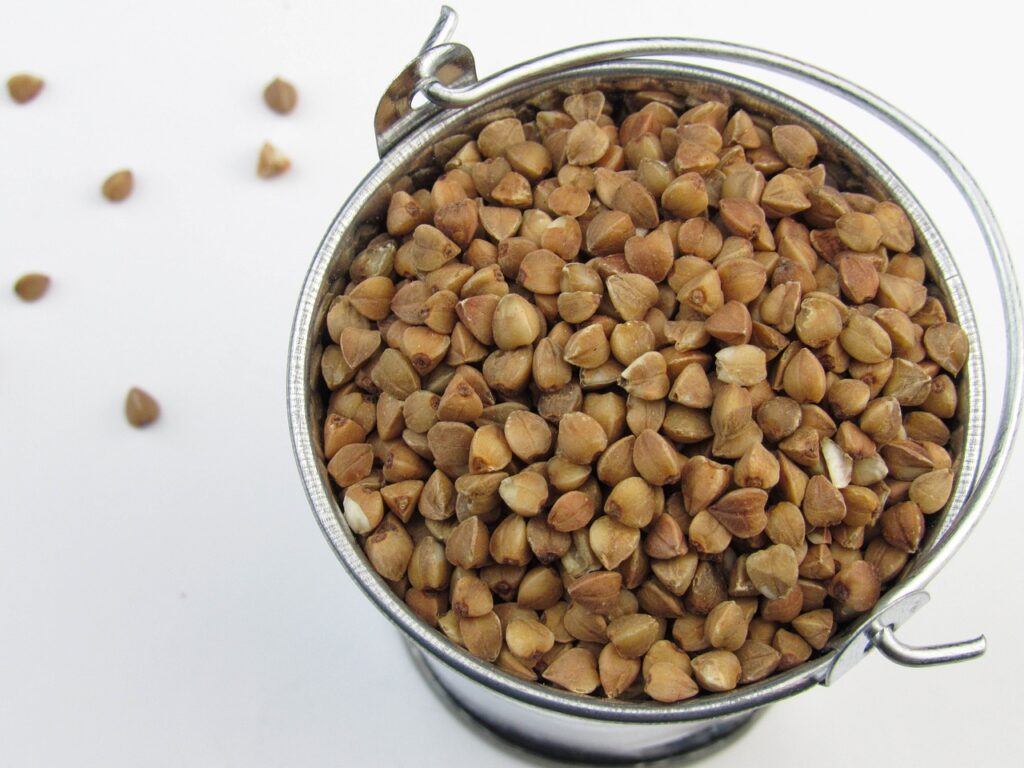
Buckwheat
Energetics: K↓VP↑
Taste/Rasa: Astringent
Potency/Virya: Hot
Vipaka: Sweet
Actions: Nutritive, aphrodisiac.
Indications: It is not as nutritious as wheat. It is still considered an important food. It is too heating and drying for Pitta and Vata Doshas.
Description: –

Bulgur Wheat
Energetics: PK↓V↑
Taste/Rasa: Sweet, astringent
Potency/Virya: Cold
Vipaka: Sweet
Actions: Nutritive, aphrodisiac.
Indications: Ayurveda recommends it for Pitta and Vata.
Description: Is produced by parboiling and then drying wheat, retaining the majority of the bran. It is available in 4 distinct grinds- fine, medium, coarse, and extra-coarse
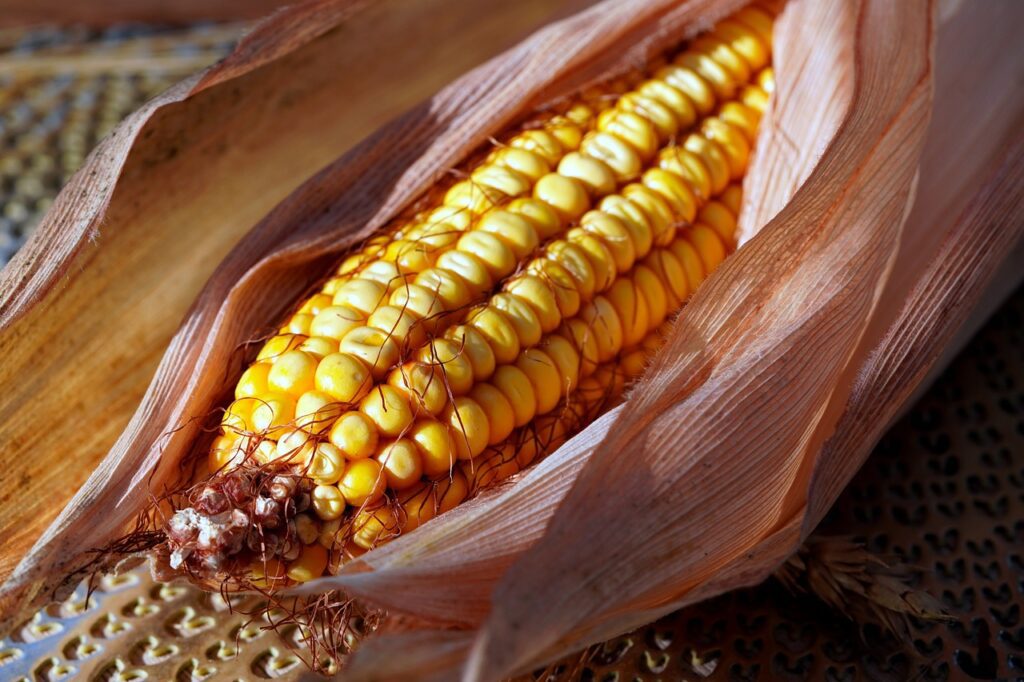
Corn (Sweet)
Energetics: VPK↓ fresh; VP↑ (in excess)
Taste/Rasa: Sweet
Potency/Virya: Hot
Vipaka: Sweet
Actions: Diuretic.
Indications: Edema, kidneys and gallstones, jaundice (corn silk especially), nutritive, liver, spleen, absorption, solar energy. It increases perception (especially with Ghṛta).
Precautions: Corn chips, VP↑ (blue corn is colder and better for P); cornbread, tortillas, and pozole are V↑.
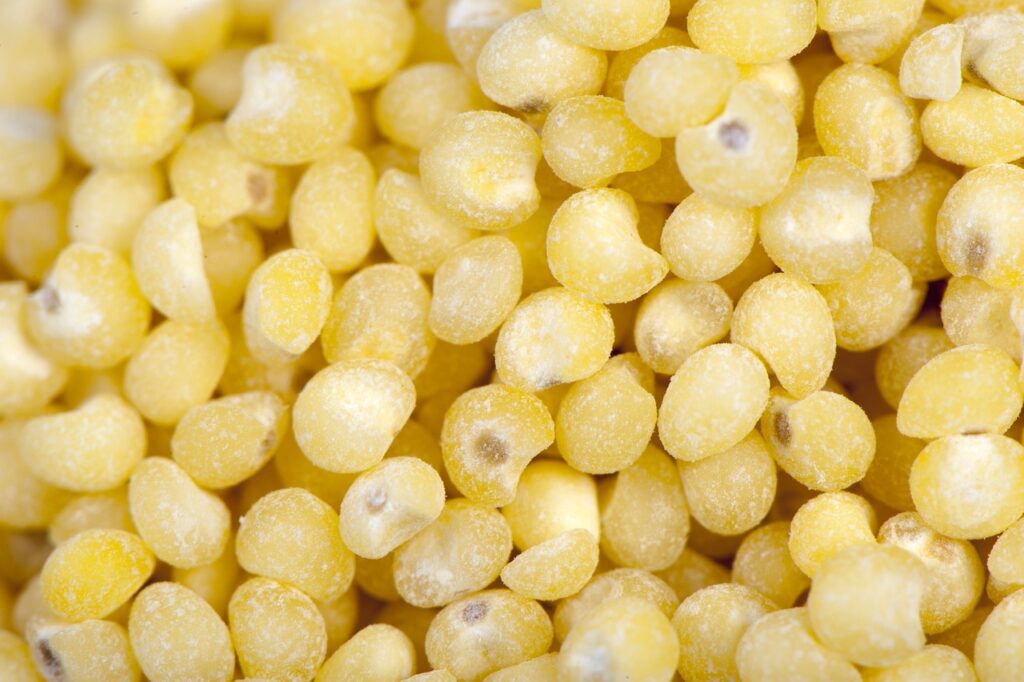
Millet
Energetics: PK↓V↑ mildly.
Taste/Rasa: Sweet
Potency/Virya: Cold
Vipaka: Sweet
Actions: Demulcent, diuretic.
Indications: Nutritive, convalescence, debility, wholesome but difficult to digest. Full of protein and nutrition.
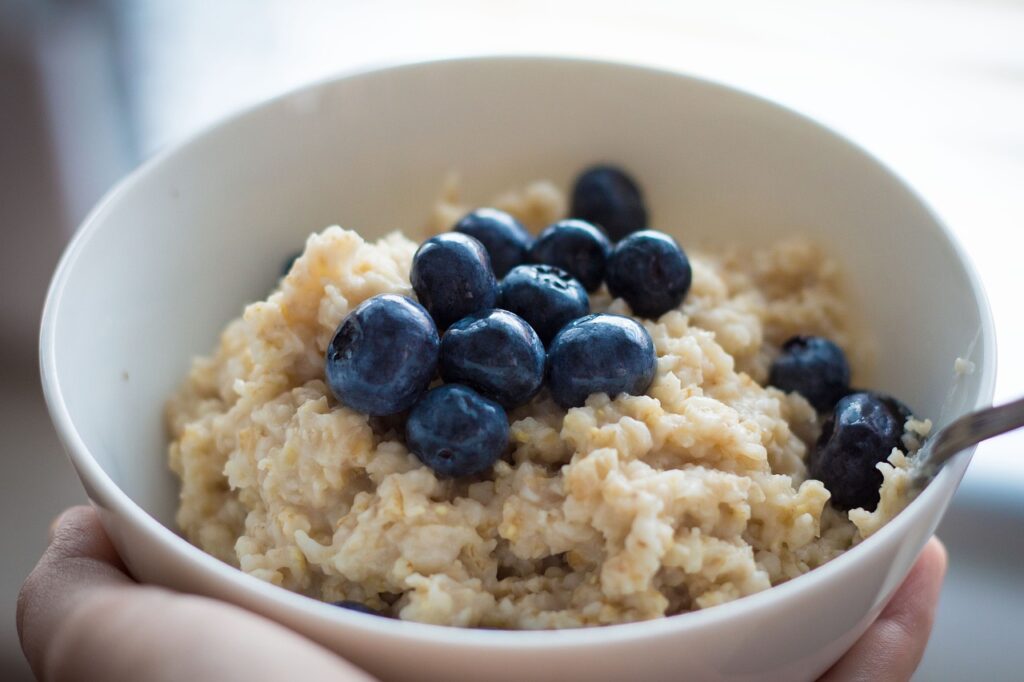
Oats
Energetics: VP↓K↑
Taste/Rasa: Sweet
Potency/Virya: Cold
Vipaka: Sweet
Actions: Demulcent, emollient, laxative (especially cut or rolled).
Indications: Calms and strengthens the mind, nerves (especially oat straw), builds all tissues (including reproductive).
Precautions: A little heavy and hard to digest, especially with sugar and milk. May produce skin eruptions or aggravate toxic blood conditions.
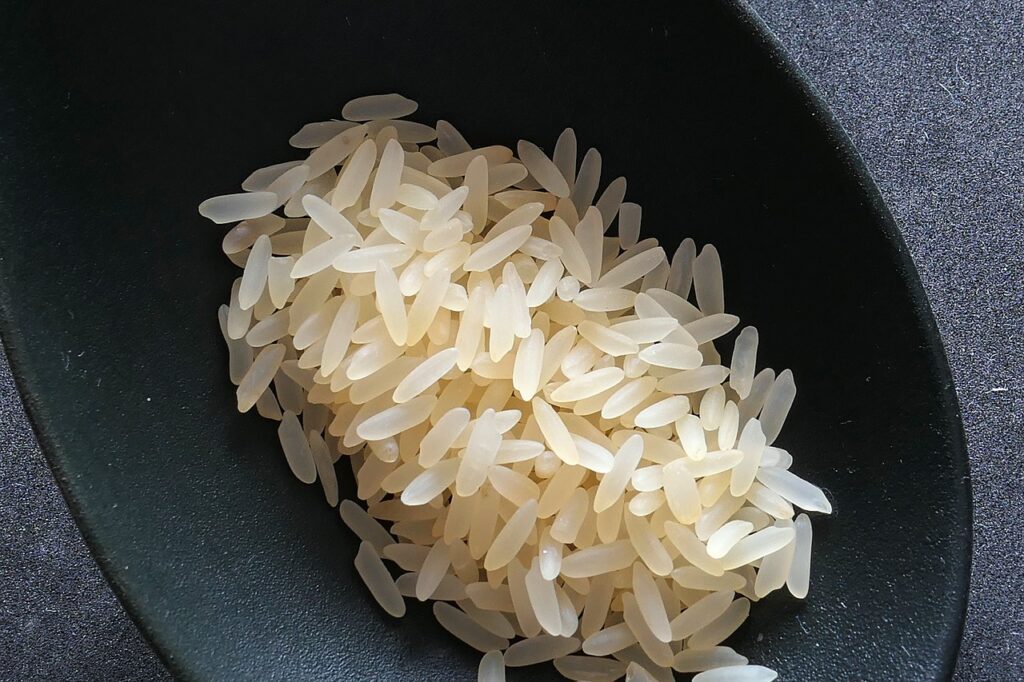
Rice
Energetics: VPK= (especially basmati) starch is easy to digest. Highly Sattvic.
Taste/Rasa: Sweet, astringent
Potency/Virya: Cold or neutral
Vipaka: Sweet
Actions: Tonic, nutritive, demulcent, laxative.
Precautions: Bleached, refined white- K↑ Ama. Brown short grain (warming) V↓ but P↑(in excess)
Indications: Vomiting, anorexia, poor digestion, harmonizes the stomach, builds all tissues through plasma. Rice that is pointed at both ends is best. It relieves thirst and is good for all three Doshas. White basmati rice is best as it is nutritious yet is easily digested. Brown rice may have more nutrients, but since it is harder to digest, one may not obtain any nutrition from it without an excellent digestive fire.
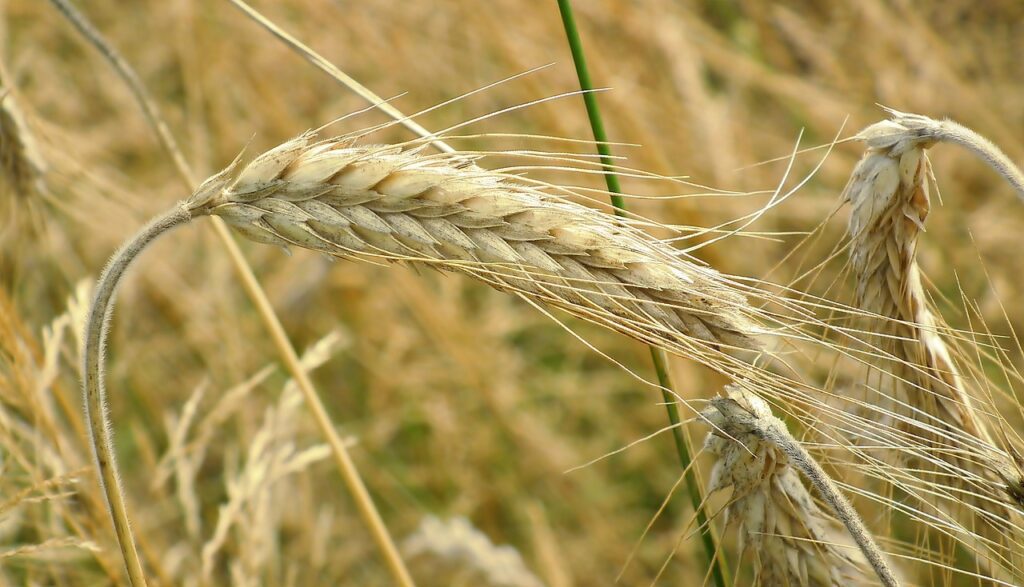
Rye
Energetics: PK↓V↑
Taste/Rasa: Sweet, astringent
Potency/Virya: Cold
Vipaka: Sweet
Actions: Diuretic.
Indications: One of the best grains to benefit kapha.
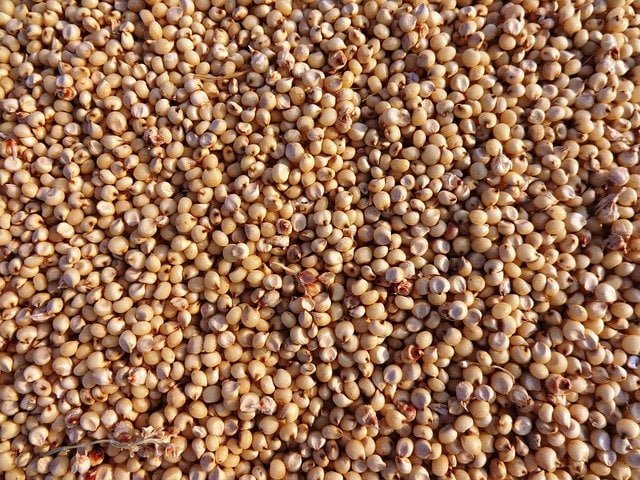
Sorghum (Jowar)
Energetics: PK↓; V↑
Taste/Rasa: Sweet, astringent
Potency/Virya: Warm
Vipaka: Pungent
Actions: Diuretic.
Indications: –
Description: Its a variety of millet. Sorghum is gluten free and it is safe for people who are sensitive to consumption of protein called gluten.
Sorghum is an Old World cereal grain that belongs to the grass family Poaceae. It’s also native to warm regions of the world and is a major source of grains and stockfeed. Like millet, sorghum is also drought resistant. It’s a popular crop to grow in the drier regions in the world. Sorghum has been introduced to America from Africa, where it has been growing for thousands of years. Moreover, sorghum plants grow tall like corn.
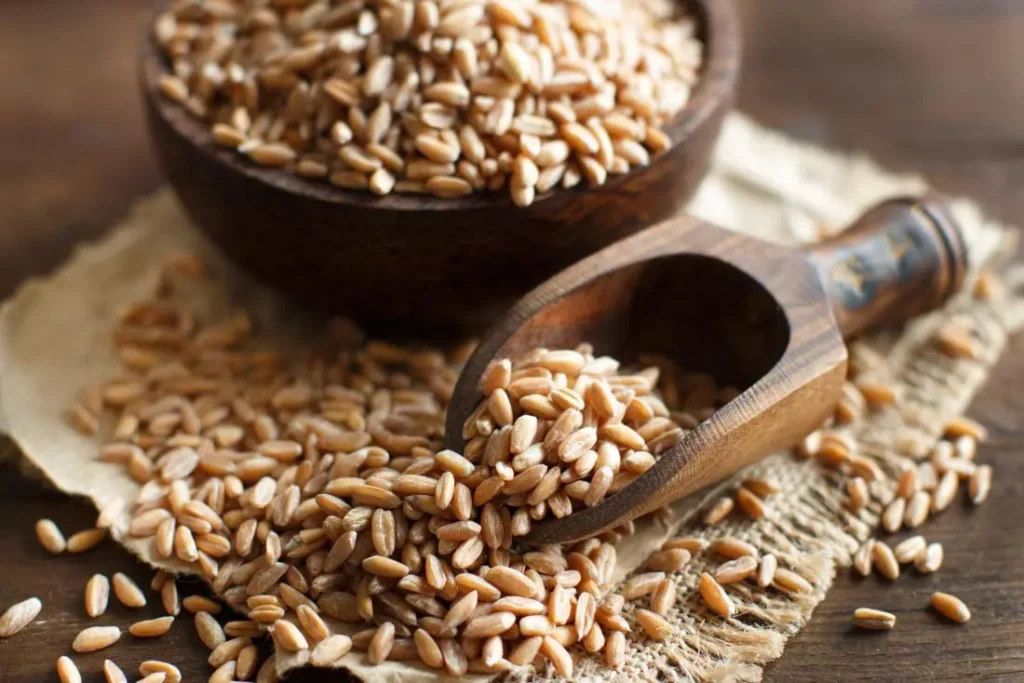
Spelt
Energetics: VPK↓; (V↑ In excess); Sattvic
Taste/Rasa: Pungent, astringent
Potency/Virya: Warm
Vipaka: Pungent
Actions: Diuretic.
Indications: –
Description: When you combine spelt with a grain like buckwheat, you create a more Tridoshic mix (balancing to all constitutions).
Spelt is a very nutritious grain but, unlike wheat, is also light and relatively easy to digest. Many people who are intolerant to wheat find they can eat spelt without a problem. This is perhaps because it contains far less gluten, has undergone less genetic modification, the gluten in spelt is more soluble and the proteins in spelt are more water soluble making it generally easier to digest.
Spelt flour tastes quite different to wheat and behaves differently when cooked, due to its greater solubility in water (which means you need to use less water when substituting it with wheat flour) and lower gluten content (which means you need to knead it less than when making bread with wheat). It has a delicious nutty flavour and is also a little darker than wheat. I’ve mainly used it for making pancakes and cookies and it is perfect for both of these. But I usually combine it with a little buckwheat (usually 2/3 spelt, 1/3 buckwheat) to help balance its light, dry qualities…
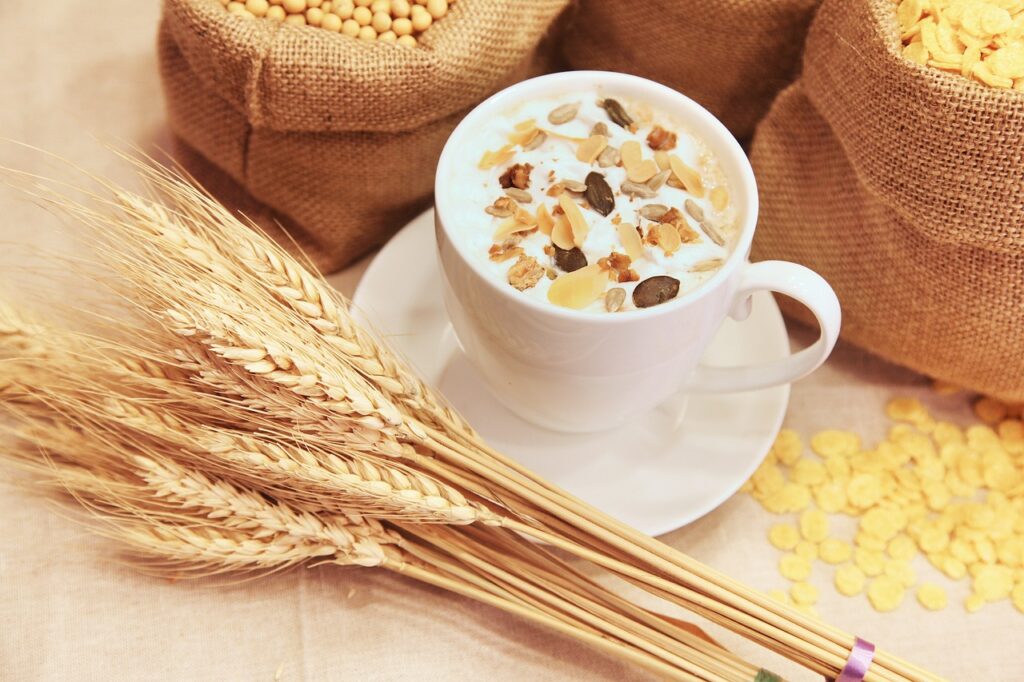
Wheat
Energetics: VP↓K↑
Taste/Rasa: Sweet, astringent
Potency/Virya: Cold
Vipaka: Sweet
Actions: Nutritive, aphrodisiac.
Precautions: Gluten may cause allergies, aggravate arthritis, gout, or other Ama conditions. White flour is an artificial and overly refined food (Tamasic). K↑ Ama↑, clogging channels and dulling the mind.
Indications: Strengthening children’s growth, builds muscle tissue, energy, earth, heart, palpitations, calms mind, insomnia, ulcers, colitis, hemorrhoids, heals fractures; with milk and sugar for bleeding disorders (Rakta Pitta). Taken as Chapatis (unleavened bread pancake); wheat bran is a bulk laxative; used as a coffee substitute. It is nourishing and strengthening for burns, sores, and skin rashes. Whole wheat restores health and alleviates Vata. It is the best grain for Vata Dosha.
Varieties: Farro and Einkorn are the ancient varieties of wheat that has not been modified, it is much easier to digest
The term farro can be used to describe three different types of ancient wheat grains:
Spelt, or farro grande (typically refers to packages imported from Italy)
Emmer, or farro medio (the most common variety found in the U.S.)
Einkorn, or farro piccolo
But what’s most important when selecting farro is to look at how it’s processed. Here’s what you need to know about the three types of farro processing:
Pearled Farro: This is most common in American grocery stores. All of the bran and outer husk is removed, but it still contains some of the fiber. It has the shortest cook time, which is why so many gravitate toward it.
Semi-Pearled Farro: This version is a good middle-ground. It has part of the bran removed from the grain, so you’re cooking time is still reduced but it’s richer in nutrients than pearled farro.
Whole Farro: The whole grain remains intact, giving you more nutrients and flavor per serving. But this also means it has the longest cook time. But good things take time, right?
Visit a Holistic Ayurvedic Coach
Talk to a Holistic Ayurvedic Coach to see which grains are best with your body constitution and which ones to avoid and how simple diet and lifestyles changes can improve how you feel.

Free 60 Minute Consultation
Completely free of charge, 60 Minute Consultation

Dietary Advise
Advise on dietary choices based on Doshas and the six tastes

Daily Routines
Create daily and nightly routines based on constitution, age and the seasons

Ayurvedic Principles
Ayurvedic principles including the holistic view of health, the elements, Doshas

Location
Online meeting, phone call or in person at coffee shop/park nearby Charlottesville, VA

Yoga Advise
Recommend yoga and yogic practices for improved health, including pranayama/breathwork



